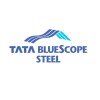Filter interviews by
JSW Group Diploma Engineer Trainee - DET Interview Questions and Answers
JSW Group Diploma Engineer Trainee - DET Interview Experiences
1 interview found
Diploma Engineer Trainee - DET Interview Questions & Answers
posted on 2 Dec 2022
I applied via Naukri.com and was interviewed in Oct 2023. There were 3 interview rounds.

(2 Questions)
- Q1. What is motor and sigal phase and three phase motar difference
- Ans.
A motor is a device that converts electrical energy into mechanical energy, while a signal phase motor operates on single phase power and a three phase motor operates on three phase power.
Motor is a device that converts electrical energy into mechanical energy
Single phase motor operates on single phase power
Three phase motor operates on three phase power
Three phase motors are more efficient and have higher power output...
- Q2. What is transformer
- Ans.
A transformer is a static electrical device that transfers electrical energy between two or more circuits through electromagnetic induction.
Transformers are used to increase or decrease voltage levels in electrical power transmission.
They consist of two coils of wire, known as the primary and secondary windings, wrapped around a core made of magnetic material.
Transformers are essential in the distribution of electricit...
(3 Questions)
- Q1. What is transformer
- Ans.
A transformer is a static electrical device that transfers electrical energy between two or more circuits through electromagnetic induction.
Transformers are used to increase or decrease the voltage in electrical power applications.
They consist of two coils of wire, known as the primary and secondary windings, which are wrapped around a core made of ferromagnetic material.
Transformers are essential in power distribution...
- Q2. Unit of Current, , power, indectenc, capecitenc
- Q3. Ampiyar, watt, henry, ferd,
Top trending discussions






Interview questions from similar companies

Diploma Engineer Trainee - DET Interview Questions & Answers
Rashmi Metaliksposted on 2 Sep 2022
I applied via Campus Placement and was interviewed in Mar 2022. There were 2 interview rounds.
Very good test, written examination
(10 Questions)
- Q1. 1)What is DRI?Full form
- Ans.
DRI stands for Direct Reduced Iron, a type of iron produced from the reduction of iron ore.
DRI is produced by removing oxygen from iron ore without melting it.
It is used as a substitute for scrap in electric arc furnaces.
DRI is also used as a feedstock in the production of steel.
The process of producing DRI is known as the direct reduction process.
DRI is also known as sponge iron.
- Q2. 2)what are the 3 main raw materials in the production of iron and steel?
- Q3. 3) what is blast furnace? BF gas reaction.
- Ans.
Blast furnace is a type of furnace used for smelting to produce industrial metals. BF gas reaction produces carbon monoxide.
Blast furnace is used for smelting iron ore into pig iron.
It is a tall cylindrical structure made of steel and lined with refractory bricks.
The BF gas reaction produces carbon monoxide, which is used as a fuel in various industries.
The process involves the reduction of iron ore with coke and limes...
- Q4. How many type of iron ore are there in india?
- Ans.
There are several types of iron ore found in India.
Hematite is the most abundant and widely found iron ore in India.
Magnetite is another important iron ore found in India.
Limonite, Siderite, and Iron Pyrites are other types of iron ore found in India.
India is one of the largest producers of iron ore in the world, with an estimated 2020 production of 206 million metric tons.
- Q5. What is steel? Composition of steel.
- Ans.
Steel is an alloy of iron and carbon, with small amounts of other elements.
Steel is a widely used material in construction, manufacturing, and transportation industries.
The carbon content in steel can range from 0.2% to 2.1% by weight.
Other elements such as manganese, chromium, and nickel are often added to improve the properties of steel.
Different types of steel are produced by varying the composition and processing m...
- Q6. What is the melting point of iron and atomic number?
- Ans.
The melting point of iron is 1538°C and its atomic number is 26.
Iron has a high melting point of 1538°C.
Its atomic number is 26, which means it has 26 protons in its nucleus.
Iron is a transition metal and is commonly used in construction and manufacturing.
- Q7. Explain Heat treatment process.what are the 3 stages of heat treatment process?
- Ans.
Heat treatment is a process of heating and cooling metals to alter their physical and mechanical properties.
The three stages of heat treatment are heating, soaking, and cooling.
Heating is done to a specific temperature depending on the metal and desired outcome.
Soaking is the holding of the metal at the desired temperature for a specific amount of time.
Cooling can be done rapidly or slowly depending on the desired outc...
- Q8. What is the highest temperature in blast furnace? Why is called bf?
- Ans.
The highest temperature in blast furnace is around 2300°F. It is called bf because it is used to produce pig iron.
The temperature in blast furnace can reach up to 2300°F
It is called bf because it is used to produce pig iron
The process involves heating iron ore, coke, and limestone in a furnace
The coke burns to produce carbon monoxide, which reacts with the iron ore to produce molten iron
The limestone reacts with impuri...
- Q9. What is slag? What fuel is used in blast furnace?
- Ans.
Slag is a byproduct of metal smelting process. Coke is used as fuel in blast furnace.
Slag is a glass-like byproduct of metal smelting process
It is formed when impurities in the metal ore combine with flux to form a molten mixture
The mixture is then cooled and solidified to form slag
Coke, a form of coal, is used as fuel in blast furnace to produce high temperatures needed for smelting
Coke burns with a high intensity and...
- Q10. What is tempering, explain some purpose.
- Ans.
Tempering is a heat treatment process used to improve the toughness and ductility of metals.
Tempering involves heating a metal to a specific temperature and then cooling it down slowly.
The purpose of tempering is to reduce the brittleness of the metal and increase its toughness and ductility.
Tempering is often used after a metal has been hardened to make it more workable.
Examples of metals that are commonly tempered in...
Interview Preparation Tips
- Diploma Engineer traine
And confidence.

Diploma Engineer Trainee - DET Interview Questions & Answers
Jindal Stainlessposted on 19 Mar 2023
I applied via Campus Placement and was interviewed in Feb 2023. There were 2 interview rounds.

(2 Questions)
- Q1. Avery thing in you subject
- Q2. All subjects in your branch topic
Interview Preparation Tips

Diploma Engineer Trainee - DET Interview Questions & Answers
Jindal Stainlessposted on 6 Sep 2022
I applied via Campus Placement and was interviewed in Aug 2022. There was 1 interview round.
(1 Question)
- Q1. What is generator how it works
- Ans.
A generator is a device that converts mechanical energy into electrical energy.
Generators work on the principle of electromagnetic induction.
They consist of a rotor and a stator, with the rotor rotating inside the stator.
The rotation of the rotor creates a magnetic field, which induces an electrical current in the stator windings.
The electrical current produced by the generator can be used to power electrical devices.
E...
Interview Preparation Tips
Self patient and not to be panic

Diploma Engineer Trainee - DET Interview Questions & Answers
JSW Steelposted on 11 Oct 2021
I applied via Campus Placement and was interviewed in Apr 2021. There were 5 interview rounds.
Interview Questionnaire
1 Question
- Q1. About my family some technical etc
Interview Preparation Tips

Diploma Engineer Trainee - DET Interview Questions & Answers
JSW Steelposted on 29 Jul 2022
I applied via Campus Placement and was interviewed in Jun 2022. There were 3 interview rounds.

Basic math and reasoning questions
(3 Questions)
- Q1. About CAD what is type of drawing and command use off machine design
- Q2. About your self and family
- Q3. About your education and quality
Interview Preparation Tips

Diploma Engineer Trainee - DET Interview Questions & Answers
Tata Steelposted on 24 Feb 2022

(1 Question)
- Q1. Tell me about yourself.
(1 Question)
- Q1. What are your salary expectations?
(1 Question)
- Q1. What is your family background?
Interview Preparation Tips

I applied via Company Website and was interviewed before Sep 2021. There were 2 interview rounds.

(1 Question)
- Q1. Asked only your job related question
Interview Preparation Tips

I applied via Company Website and was interviewed before Nov 2018. There were 5 interview rounds.
Interview Questionnaire
2 Questions
- Q1. Interviewer asked questions based on resume contents
- Q2. Just honest reply
Interview Preparation Tips

I applied via Company Website and was interviewed in Jul 2018. There were 5 interview rounds.
Interview Questionnaire
2 Questions
- Q1. One important incident in your carrier where you think you have contributed effectively in your organization
- Ans.
Implemented a new customer feedback system resulting in increased customer satisfaction and retention rates.
Identified the need for a more efficient feedback system
Researched and implemented a new software to collect and analyze customer feedback
Analyzed the data to identify trends and areas for improvement
Implemented changes based on feedback leading to improved customer satisfaction and retention rates
- Q2. What extra zeal you have that You can be hired
- Ans.
I have a strong passion for leadership and a proven track record of motivating teams to achieve success.
Proven track record of successfully leading teams in previous roles
Passionate about developing and mentoring team members
Strong communication and interpersonal skills
Ability to problem-solve and make quick decisions under pressure
Interview Preparation Tips
Experience: Reasoning, English and core subject
Round: Test
Experience: Psychometric
General Tips: Be just yourself, don't lie an inch neither exxagerate things. Coj interviewer understands very quickly your caliber and vague things.
Skills: Communication, Body Language, Analytical Skills
Duration: >3 Months
JSW Group Interview FAQs
Tell us how to improve this page.
JSW Group Interviews By Designations
- JSW Group Graduate Engineer Trainee (Get) Interview Questions
- JSW Group Assistant Manager Interview Questions
- JSW Group Electrical Engineer Interview Questions
- JSW Group Safety Officer Interview Questions
- JSW Group Civil Engineer Interview Questions
- JSW Group Electrician Interview Questions
- JSW Group Mechanical Engineer Interview Questions
- JSW Group Engineer Trainee Interview Questions
- Show more
Diploma Engineer Trainee - DET Interview Questions from Similar Companies
JSW Group Diploma Engineer Trainee - DET Reviews and Ratings
based on 1 review
Rating in categories
|
Assistant Manager
248
salaries
| ₹5.5 L/yr - ₹12.1 L/yr |
|
Graduate Engineer Trainee (Get)
180
salaries
| ₹5.5 L/yr - ₹11 L/yr |
|
Deputy Manager
136
salaries
| ₹10.2 L/yr - ₹18 L/yr |
|
Senior Engineer
90
salaries
| ₹5 L/yr - ₹9.8 L/yr |
|
Manager
81
salaries
| ₹12 L/yr - ₹21.5 L/yr |

Tata Steel

JSW Steel

Jindal Steel and Power

ArcelorMittal Nippon Steel
- Home >
- Interviews >
- JSW Group Interview Questions










